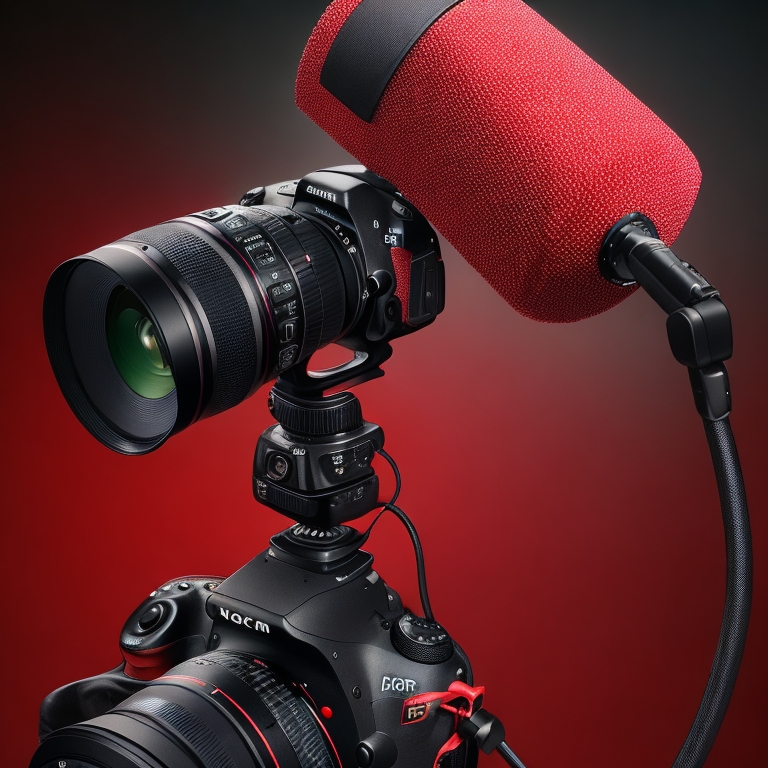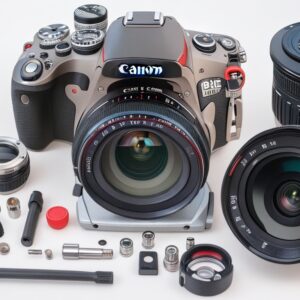
DSLR Microphone
Introduction
When it comes to capturing high-quality audio for your DSLR videos, having a reliable and top-notch microphone is essential. A good DSLR microphone can significantly enhance the audio recording capabilities of your camera and provide professional-level sound quality. In this ultimate DSLR microphone guide, we will explore everything you need to know about selecting the perfect microphone for your DSLR camera setup.
-
Why Do You Need a DSLR Microphone?
Having a DSLR microphone is crucial for capturing high-quality audio that complements the visuals of your videos. Built-in camera microphones often pick up unwanted noise and produce low-quality sound, resulting in a poor viewing experience for your audience. A dedicated DSLR microphone can provide clear and professional audio, making your videos more engaging and enjoyable to watch.

-
Understanding Different Types of DSLR Microphones
2.1 On-Camera Microphones
On-camera microphones are compact and attach directly to your DSLR camera’s hot shoe. They are ideal for run-and-gun style shooting or situations where portability is important. On-camera microphones capture audio from the surroundings and are suitable for capturing ambient sound.
2.2 Shotgun Microphones
Shotgun microphones are highly directional and capture sound primarily from the front while minimizing unwanted noise from the sides and rear. They are commonly used in filmmaking and are perfect for capturing dialogue or subjects in noisy environments.
2.3 Lavalier Microphones
Lavalier microphones, also known as lapel microphones, are small and discreet. They are commonly clipped onto the clothing of the person speaking, making them ideal for interviews, presentations, or situations where hands-free operation is necessary.
2.4 Wireless Microphones
Wireless microphones provide the freedom to move around without being tethered to your camera. They consist of a transmitter and receiver, allowing you to capture audio wirelessly from a distance. Wireless microphones are versatile and suitable for various shooting scenarios.
-
Factors to Consider When Choosing a DSLR Microphone
3.1 Microphone Directionality
Consider the directionality of the microphone based on your shooting requirements. Determine whether you need a microphone with a wider pickup pattern or one that focuses on capturing audio from a specific direction.
3.2 Frequency Response
The frequency response of a microphone determines the range of frequencies it can accurately capture. Ensure that the microphone you choose covers the frequency range needed for your specific audio recording needs.
3.3 Connectivity Options
Check the connectivity options of the microphone to ensure compatibility with your DSLR camera. Some microphones connect via the camera’s audio input jack, while others use wireless or XLR connections.
3.4 Power Source
Consider the power source requirements of the microphone. Some microphones are powered by the camera, while others require batteries or external power sources. Choose a microphone that aligns with your preferences and shooting style.
-
Popular DSLR Microphone Brands
4.1 Rode
Rode is a renowned brand in the world of DSLR microphones, offering a wide range of high-quality microphones suitable for various shooting scenarios. Their microphones are known for their durability, performance, and affordability.
Rode DSLR Microphone Buy Now From Amzon
4.2 Audio-Technica
Audio-Technica is another well-established brand that produces reliable and professional-grade DSLR microphones. They offer a diverse range of microphones that cater to different audio recording needs, from on-camera options to wireless systems.
Audio-Technica Microphone Buy Now From Amzon
4.3 Sennheiser
Sennheiser is a trusted name in the audio industry, and their DSLR microphones are no exception. Known for their exceptional sound quality and reliability, Sennheiser microphones are favored by professionals in the field.
Sennheiser Microphone Buy Now Fron Amzon
4.4 Shure
Shure is synonymous with quality audio equipment, and their DSLR microphones deliver exceptional performance. With a focus on capturing clear and accurate sound, Shure microphones are a popular choice among content creators and filmmakers.
Shure Microphone Buy Now From Amzon
-
Tips for Using a DSLR Microphone
5.1 Proper Placement and Positioning
Ensure that you position the microphone correctly to capture the desired sound. Experiment with different placements and angles to find the optimal position that delivers the best audio quality.
5.2 Wind Protection
When shooting outdoors, wind noise can be a significant issue. Use a windscreen or a furry wind cover to reduce wind noise and ensure clean audio recordings.
5.3 Adjusting Audio Levels
Monitor and adjust the audio levels to prevent distortion or clipping. Test the audio levels before recording to ensure optimal sound quality.
5.4 Monitoring the Audio
Use headphones or a monitoring system to listen to the audio in real-time while recording. This allows you to detect any issues or unwanted noise and make necessary adjustments on the spot.
-
Maintaining and Caring for Your DSLR Microphone
To ensure the longevity and optimal performance of your DSLR microphone, follow these maintenance tips:
- Store the microphone in a protective case when not in use.
- Keep the microphone clean and free from dust and debris.
- Handle the microphone with care to avoid any physical damage.
- Check and replace batteries regularly if your microphone requires them.
-
Best Practices for DSLR Microphone Recording
To achieve the best audio quality when using a DSLR microphone, consider the following best practices:
- Record in a controlled environment with minimal background noise.
- Perform a sound check before recording to ensure proper microphone operation.
- Use external audio recorders or audio interfaces for enhanced sound quality.
- Invest in post-processing software to further enhance and polish your audio recordings.
Conclusion
Investing in a high-quality DSLR microphone is a game-changer when it comes to audio recording for your videos. By understanding the different types of DSLR microphones, considering essential factors, and following best practices, you can elevate the overall production value of your videos and provide an immersive viewing experience for your audience.
Camera Buy Now From Amzon
Frequently Asked Questions
Q1: Can I use a DSLR microphone with other devices?
Yes, DSLR microphones can be used with other devices such as camcorders, smartphones, and audio recorders, as long as they have compatible connectivity options.
Q2: Do I need to buy additional accessories for my DSLR microphone?
It depends on your specific needs. Additional accessories like shock mounts, boom poles, and extension cables can enhance your recording setup, but they are not always necessary.
Q3: Can I use a wireless microphone with my DSLR camera?
Yes, wireless microphones are compatible with DSLR cameras. However, ensure that your camera has the necessary audio input or hot shoe for connecting the wireless receiver.
Q4: Can I use multiple microphones with a DSLR camera?
Some DSLR cameras have multiple audio inputs, allowing you to connect and use multiple microphones simultaneously for different recording purposes.
Q5: How much should I spend on a DSLR microphone?
The price range for DSLR microphones varies depending on the brand, features, and quality. It’s recommended to invest in a microphone that suits your specific requirements and budget, ensuring a balance between performance and affordability.



